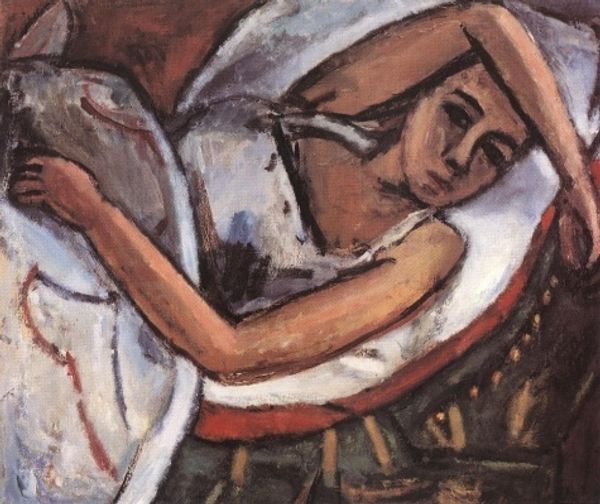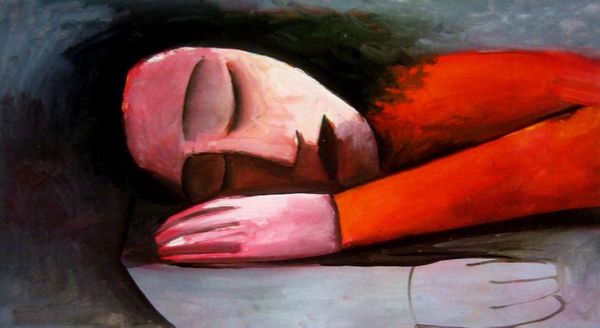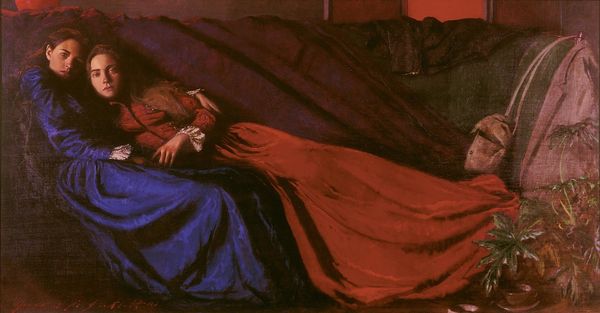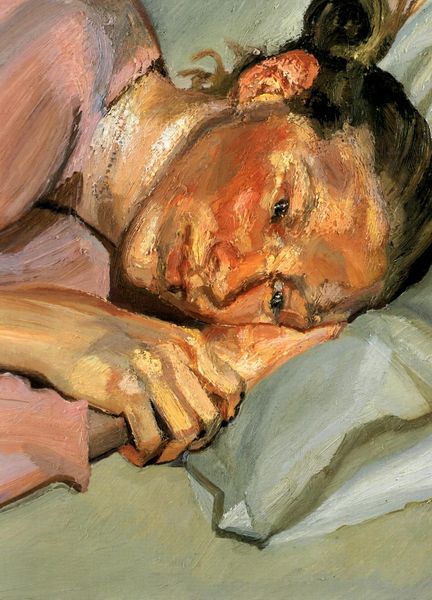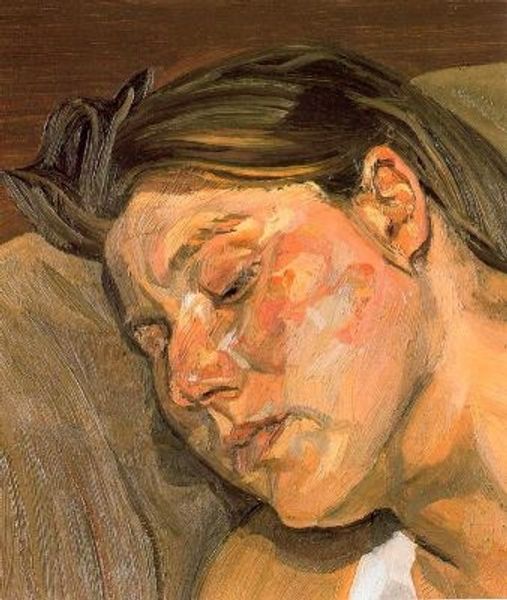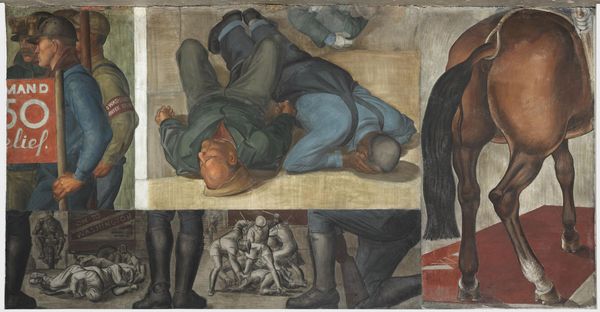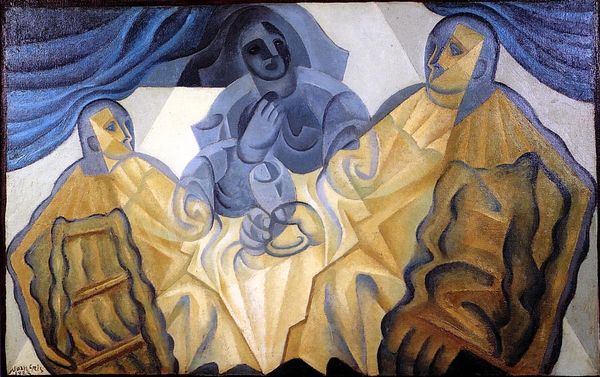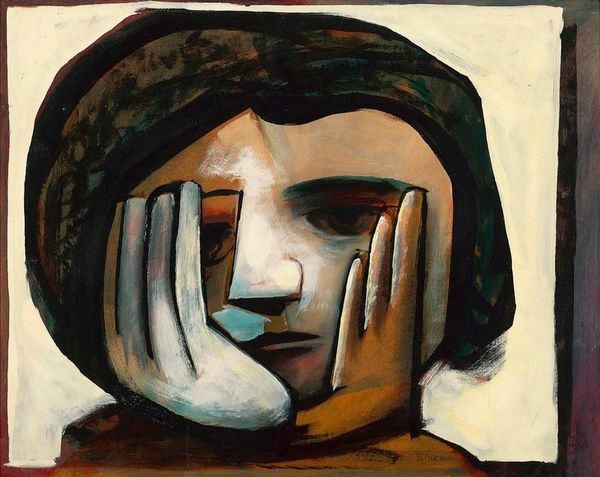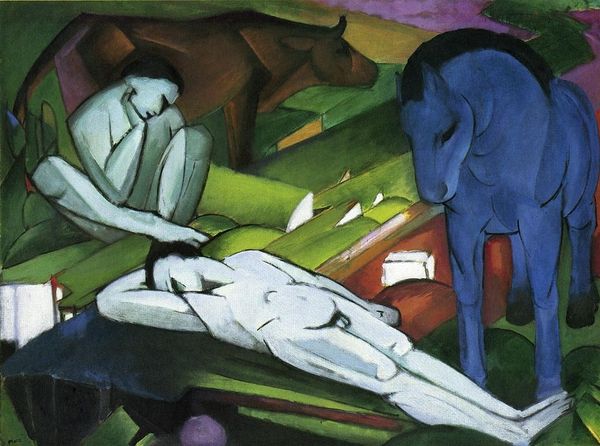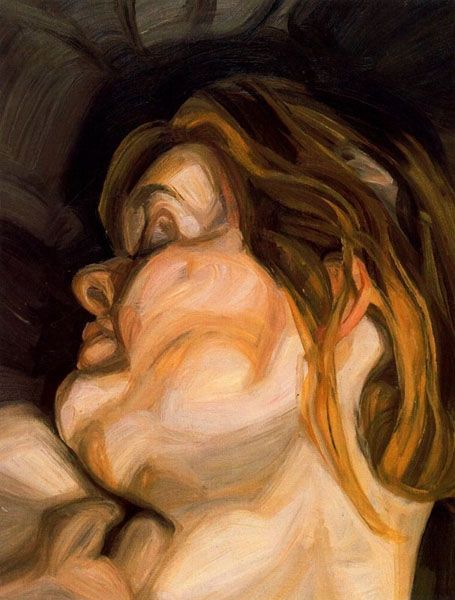
tempera, painting, oil-paint, mural
#
portrait
#
tempera
#
painting
#
oil-paint
#
social-realism
#
oil painting
#
portrait drawing
#
history-painting
#
portrait art
#
mural
Copyright: Vela Zanetti,Fair Use
Editor: This striking section of Vela Zanetti's "Mural of Human Rights," titled "Dead Child," dates to 1953. The somber, almost sculptural treatment of the figure against the dark backdrop makes it feel intensely mournful. How would you interpret this work in the context of its creation and its intended message about human rights? Curator: That’s a powerful question. To truly understand its impact, we must consider the historical landscape. This mural was commissioned for the United Nations building. Think about the socio-political context of 1953 – the post-war era, the rise of the UN as a symbol of hope, but also the looming shadow of the Cold War. How does this image function within that complex framework? Is it merely a depiction of tragedy, or something more politically charged? Editor: I see what you mean. It's easy to get caught up in the raw emotion, but it's also a carefully constructed visual statement. Was Social Realism like this always meant to promote action through empathy, or were there other aims? Curator: Exactly! Social Realism often aimed to expose social inequalities and galvanize viewers. Here, the 'Dead Child' can be viewed as a potent symbol, demanding acknowledgment of the suffering inflicted by various political and social forces. It challenges viewers to confront the human cost of conflict and injustice. Consider also the setting within the UN building - it aims to hold global powers accountable. Editor: It definitely gives me a new appreciation for the weight of this work and the layers of context informing its meaning. Seeing it as more than just an isolated image but rather a piece within a grand, political statement. Curator: Precisely! It serves as a constant reminder within the UN of its mission and moral responsibility. And that really underscores the potent relationship between art, history, and the politics of representation.
Comments
No comments
Be the first to comment and join the conversation on the ultimate creative platform.
